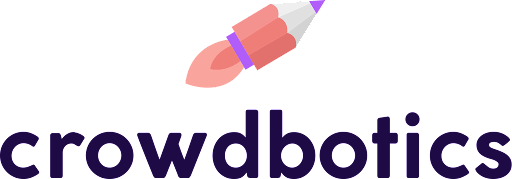Crowdbotics Brings AI To “CodeOps” To Improve Reuse, Accelerate App Builds
The Crowdbotics platform is bringing AI to CodeOps to help teams offer more efficient reuse and deliver apps build plans in just seconds. IDN speaks with Crowdbotics Bryan Dunn
by Vance McCarthy
Tags: AI, application development, CodeOps, Crowdbotics, DevOps, modernization, pipelines, reuse,

vp product

"When enterprises see the benefit of implementing a CodeOps practice for that application, we see a snowball effect. It kicks off a digital transformation cycle."
 Integration Powers Digital Transformation for APIs, Apps, Data & Cloud
Integration Powers Digital Transformation for APIs, Apps, Data & CloudDecember 7, 2023
Crowdbotics is bringing AI capabilities to CodeOps to help teams get more from reuse projects and deliver app builds cleaner and faster.
Crowdbotics new AI features are fine-tuned for code operations and aim to help organizations enable systemic code reuse and accelerate software development. In specific, Crowdbotics addition of AI will allow users to generate individual application build plans in seconds, as well as instantly assemble a running application from prebuilt parts.
“We are in the middle of a paradigm shift for product creators with Generative AI. Adapting to this new world requires us to redefine the software development lifecycle to be AI-first, in planning, verifying, and launching software,” said Anand Kulkarni, founder and CEO, Crowdbotics. “The Crowdbotics platform delivers an efficient process to enable systemic code reuse within your organization using AI.”
IDN wanted to know whether the platform replaces (or needs to be integrated with) any app pipeline tools or technologies. “It’s a good question. The short answer is that Crowdbotics works with traditional appdev platforms vs replaces them,” Crowdbotics vice president product Bryan Dunn told IDN.
Crowdbotics CTO Charath Ranganathan also added context. “Our platform assists developers — it doesn’t replace them. All code used to create software is analyzed and verified with tooling and by humans before it’s available to customers. As a full code platform, we integrate with your existing DevOps stack, so any code written by developers on the platform can be subject to your existing security and compliance guidelines,” he said in a statement.
Dunn also shared popular user trends and “starter” use cases for Crowdbotics adopters.
In enterprise specifically, we typically see Crowdbotics adopted first during new application builds. It turns out there are dozens to hundreds of important applications within an enterprise that are a decade or two old and have investment allocated for a ‘rewrite.’ When enterprises see the benefit of implementing a CodeOps practice for that application, the other rewrites are more appealing because they are much cheaper than originally thought. We see a snowball effect where enterprises realize there’s an opportunity to modernize their applications at much lower cost than they originally thought. It kicks off a digital transformation cycle.
The Architecture for Crowdbotics AI + CodeOps
The drawing below, provided by Crowdbotics, illustrates points where Crowdbotics works with a customer’s existing stack and tools. [Note: Areas where AI us used are in RED.]

Dunn also highlighted several key areas where Crowdbotics features supports CodeOps to promote code reuse and accelerate app delivery. Among them:
- Assessment AI: Securely scan actual project data to discover areas of duplicative work and create code reuse roadmap. This process Identifies opportunities for reuse from historical requirements and helps craft a reuse strategy using modules
- PRD AI: Generate a comprehensive, actionable software build plan for any new product in seconds. Thanks to AI, Crowdbotics can do this from only a few lines of text or an existing set of requirements. In addition, Crowdbotics AI recognizes requirements from that PRD that map to existing modules.
- Assembly AI: Instantly snap together prebuilt modules of code and readymade features from the Crowdbotics catalog to launch a running application. This ability to “auto-install” modules means developers can focus only on the parts an application that are unique (no need to reinvent the wheel)
- Edit with AI: Modify AI-generated applications with natural language suggestions.
Beyond these AI additions, Crowbotics engineers also designed their UI/UX to make it easy for developers to use. Dunn shared details with IDN on the company’s “design thinking” for their interface and use experiences.
There’s a lot of “AI” companies out there taking a tech first approach where they have a solution in search of a problem. We’re doing the opposite. We’ve thought about where AI could aid the Software Development Life Cycle (SDLC) and are using it behind the scenes to make the SDLC more efficient and accelerate innovation.
For example, our User Experience for creation an SMB application just asks for a few lines about what application you want to build and generates a Product Requirements Document (see the first two screens below). We’ve used AI in the background to eliminate a lot of the low value steps in requirements creation that would prevent a small business or entrepreneur in the past from building an application.
Dunn also shared a screenshot of the Crowdbotics Studio portion of the product. The image shows what “users see after our “Assembly AI” has matched modules from our catalog and automatically installed them,” he said.

The screenshot shows users can:
- View the screens, data models, connectors to 3rd party systems and other assets that generated by Crowdbotics
- Configure those modules in Studio (e.g. add API keys and configuration options)
- Do light editing of screens and other modules in our in-product IDE
- Eject to their own IDE and make edits / improvements and promote to Github to see the changes in the product.
CodeOps + AI For Meeting Software Development Goals
CodeOps is founded on a simple principle: up to 70% of the code organizations write in their applications has been written before. Even so, teams continue to write new software from the ground up, ultimately draining resources and slowing time to market.
With Crowdbotics, CodeOps combines with AI to identify the correct project specifications and code modules for each product and organization. This significantly accelerates the development process, empowering businesses to focus on unique innovations and get their products to market faster.
"Crowdbotics is at the conflux of multiple tailwinds. The rise of AI for code generation presents an opportunity to expand the development capability of users. Furthermore, in a recessionary environment, there are even fewer development resources to go around. Crowdbotics presents a cost-effective solution for enterprises to meet software development goals that can help their businesses save money," said Aaron Jacobson, Partner at venture firm NEA (New Enterprise Associates).
Related:
All rights reserved © 2024 Enterprise Integration News, Inc.


